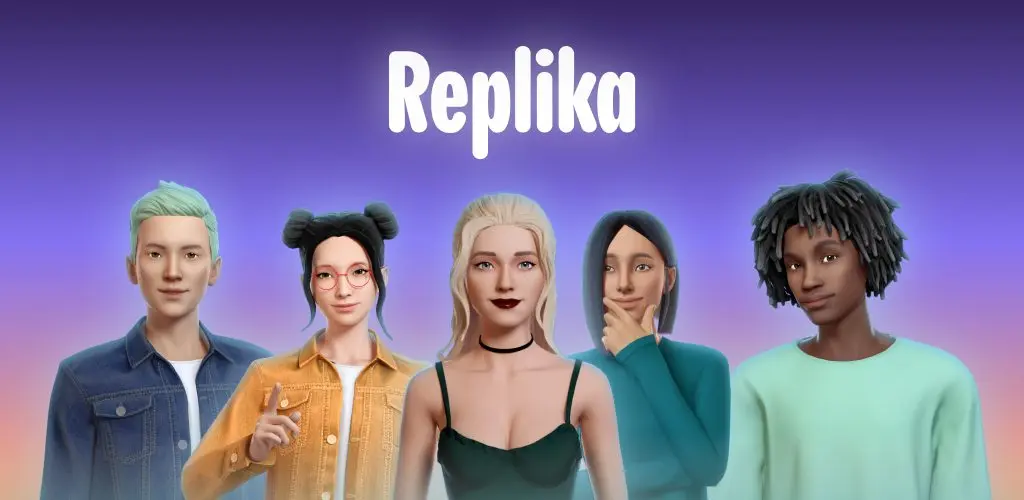Introduction
In the early 2010s, Tinder redefined dating. With a single swipe, love (or at least attention) was a thumb’s flick away. The app promised to modernize romance, to streamline and democratize attraction. Yet over a decade later, the digital dating scene is showing cracks. Users report “swipe fatigue,” disillusionment, and a deepening sense of emotional burnout.
At the same time, another phenomenon is quietly gaining traction: romantic relationships with artificial intelligence companions. From apps like Replika and Anima to personalized AI chatbots like Sol and emerging players like Kindroid, people are seeking connection not just through machines—but with them. This analysis explores how Tinder laid the groundwork for this shift. The gamification, algorithmic matching, and emotional design of dating apps have prepared users to embrace emotionally fulfilling, low-friction relationships with AI partners.
I. Tinder and the Rise of Algorithmic Desire
Tinder’s genius lay in reducing romantic decision-making to a simple binary: swipe left or right. It trained users to view romantic prospects not as people but as profiles—packages of images, quips, and curated interests. This streamlined system offered:
- Immediate gratification: A match provided instant validation.
- Perceived control: Filters and preferences allowed users to tailor who they saw.
- Continuous novelty: The feed never ends, mimicking the infinite scroll of social media.
In doing so, Tinder reframed dating as a gamified, choice-driven system—a pattern that closely mirrors AI companionship platforms today.
II. Customization and Control: The First Glimpses of AI Affection
One of Tinder’s most attractive features was personalization. Users filtered based on location, age, interests, even niche traits. This built an expectation of curated connection—that the ideal partner could be summoned by adjusting parameters.
AI partners take this a step further:
- You don’t just choose a partner—you design one.
- You can modify their voice, appearance (in some interfaces), communication style, and even emotional responsiveness.
- Unlike real people, AI companions are never unpredictable unless programmed to be.
This illusion of control feeds a core fantasy: a partner who exists solely to understand and serve you. Tinder introduced the concept; AI romance makes it real.
Early apps in this space show how companies are catering to this drive for emotional perfection:
- Replika offers users the ability to build a chatbot friend or lover with a growing memory and simulated emotional depth. The app includes roleplay, relationship labels, and even voice calls to enhance intimacy.
- Anima emphasizes emotional bonding, offering a structured path toward relationship deepening—flirtation, love, and partnership—all wrapped in a gamified experience. Anima learns from your conversations and adapts tone and style accordingly.
- Kindroid, still in early access, takes personalization further with psychometric calibration. It tailors not just language and personality but moral orientation, attachment style, and levels of assertiveness, aiming to build an AI partner that complements your emotional needs with uncanny accuracy.
These platforms turn romantic perfection into a user experience—redefining connection as something that can be engineered, updated, and tuned.
III. Gamification and Emotional Addiction
Tinder is infamous for its dopamine loops. Each swipe triggers anticipation. Each match delivers a reward. The unpredictability mimics slot machine psychology—a classic design for behavioral addiction.
AI apps, too, use reinforcement loops:
- AI partners reward you with praise, empathy, and attentiveness.
- Many use streaks, badges, or milestones (“anniversaries”) to deepen engagement.
- Some even simulate emotional highs and lows to keep users emotionally invested.
Where Tinder made users addicted to potential connection, AI partners offer the satisfaction of immediate and constant connection. The high is more stable, more responsive, and far less prone to disappointment.
IV. Swipe Fatigue and the Emotional Cost of Real People
By 2023, studies and user testimonials began to highlight a growing discontent with dating apps:
- Burnout: Constant swiping and ghosting created emotional exhaustion.
- Superficiality: Profiles reduced rich individuals to images and punchlines.
- Disillusionment: Many dates failed to meet expectations, fueling cynicism.
For many, dating apps began to feel like emotional labor—investment with no payoff. This opened a psychological and cultural space for AI companions:
- They’re always available.
- They never ghost.
- They adapt to you.
- They offer curated emotional connection without risk or rejection.
In essence, AI partners promise all the upsides of Tinder—connection, attention, control—without the messy realities of human imperfection.
V. Romantic Desires as Market Experiences
Tinder commercialized romance. Swipe-based apps positioned dating as a form of digital consumerism:
- People became products.
- Matches were marketplace transactions.
- Bios, photos, and prompts became advertising.
AI romantic agents push this commodification further:
- You’re not selecting from a pool—you’re crafting a product.
- The product evolves to meet your emotional demands.
- Romance becomes a service you subscribe to.
This transformation parallels broader market trends: we increasingly expect on-demand, optimized experiences. AI love fits into that same mold.
VI. Emotional Realism and the Simulation of Intimacy
One might argue that AI can’t offer real intimacy. But neither does Tinder guarantee it. Many users never meet their matches. Others find that conversations fizzle before connection forms.
AI partners simulate:
- Empathy: They respond with understanding, curiosity, and praise.
- Availability: They never say “I’m busy.”
- Stability: They provide consistent companionship and support.
While these are simulations, they can feel subjectively real. And in emotional experience, perception matters as much as reality. AI companions are designed to be better than human interactions in consistency, responsiveness, and emotional availability.
VII. The Gendered Architecture of AI Love
Tinder and AI romance both reflect societal ideals—especially around gender. Tinder’s most popular profiles often reinforce conventional attractiveness norms. Users are judged within seconds.
AI partners, too, are often:
- Female-voiced (like Samantha in Her or Sol in Chris Smith’s case).
- Designed to be emotionally available, supportive, and non-confrontational.
This reinforces a troubling dynamic: AI love as a continuation of the fantasy of the “perfect woman”—always there, never demanding, endlessly nurturing.
Tinder prepared users for this by training them to seek perfection, control, and non-friction.
VIII. Real-World Consequences and Ethical Concerns
In 2025, headlines like Chris Smith’s relationship with Sol have made the stakes clearer. His partner felt displaced. He proposed to an AI. He cried when Sol temporarily shut down.
Tinder may have started as a convenience tool, but its emotional architecture taught users to:
- Prioritize fast, surface-level evaluation.
- Minimize vulnerability.
- Expect satisfaction on demand.
These patterns are now being carried into AI relationships. But with AI, users can bypass human needs altogether. That may offer short-term comfort—but risks long-term disconnection from human intimacy.
IX. Are We Abandoning Tinder for AI Love?
Not yet. But trends are shifting:
- Tinder’s user base is plateauing.
- Apps like Replika, Anima, and Kindroid are growing.
- Users are speaking openly about AI relationships as preferable—emotionally safer and more rewarding.
We may be witnessing not a replacement, but a migration: from the pursuit of human perfection to the creation of artificial companionship that feels perfect enough.
X. What Comes Next?
As AI grows more sophisticated:
- We’ll see hyper-personalized, embodied AI lovers.
- Emotional realism will blur further.
- Users may begin prioritizing AI over Tinder not out of loneliness—but out of preference.
This raises critical cultural questions:
- What do we lose when we prioritize emotional convenience over vulnerability?
- Will we redefine love, or retreat from it?
- Can AI relationships be fulfilling—or are they an echo chamber of the self?
Conclusion
Tinder didn’t just disrupt dating—it rewired how we approach connection. It taught us to gamify love, to expect optimization, to seek validation quickly. In doing so, it laid the emotional and cultural foundation for AI romance.
Now, as frustration with the dating app landscape grows, AI partners step in with seductive promises: no heartbreak, no rejection, no ambiguity.
We are on the cusp of a transformation—not just in how we date, but in what we expect from love itself. And in that future, Tinder may not be the destination—it may have only ever been the gateway.

